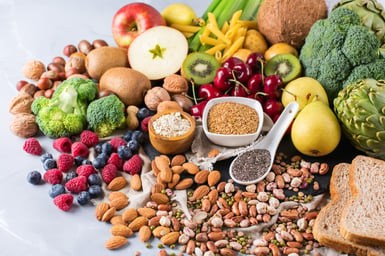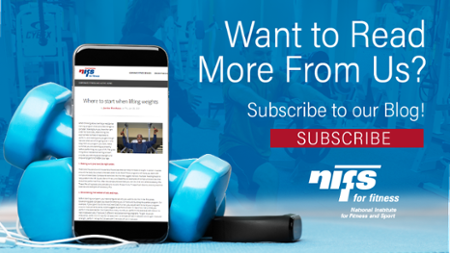 The holiday season is here, and Thanksgiving often marks the beginning of celebrations focused on family, food, and gratitude. While it’s a time to enjoy yourself, it can also present challenges if you’re trying to stick with healthy habits. The good news is that you don’t have to choose between enjoying the holiday and maintaining your wellness goals. With a few thoughtful approaches, you can do both!
The holiday season is here, and Thanksgiving often marks the beginning of celebrations focused on family, food, and gratitude. While it’s a time to enjoy yourself, it can also present challenges if you’re trying to stick with healthy habits. The good news is that you don’t have to choose between enjoying the holiday and maintaining your wellness goals. With a few thoughtful approaches, you can do both!
Stay Active with Family Fun
Thanksgiving traditions don’t have to be confined to the dinner table. Incorporate movement into your holiday plans by organizing family-based activities that get everyone outdoors. A short walk after the big meal can aid digestion and provide a chance to connect in a different setting. You might also consider starting a new tradition, like a family hike or a friendly game of touch football in the backyard. Not only does this add a layer of fun, but it also helps balance out the indulgence of the holiday meal.
Enjoying Food Without Guilt
Thanksgiving is about more than food—it’s about spending time with loved ones and creating lasting memories. The key to balancing enjoyment with health is mindful eating, which lets you savor your favorite dishes guilt-free. Mindful eating encourages you to slow down and truly appreciate each bite. Pay attention to the flavors, textures, and aromas of the food, and listen to your body’s hunger and fullness cues. Take smaller portions to start, and go back for seconds if you’re still hungry. By eating mindfully, you can fully enjoy your meal, indulge in your favorite foods, and still feel good about your choices. Remember, this is a time to celebrate and connect with family, so let food be part of that experience, not something to stress over.
Structuring Your Plate for Balance
One way to enjoy the feast while keeping balance in mind is by being strategic about how you fill your plate. Start by prioritizing vegetables and lean proteins, which help keep you satisfied longer. Roasted vegetables, green beans, and salads are excellent choices alongside turkey or other protein sources. Aim for a colorful plate, with about half filled with veggies, a quarter with protein, and the last quarter reserved for your favorite indulgent foods, like mashed potatoes, stuffing, or that slice of pie you’ve been looking forward to.
Thanksgiving is an opportunity to celebrate family and food, and with a few thoughtful choices, you can make the most of both. By staying active through family-friendly activities and building a balanced plate, you’ll leave the table feeling good—both physically and emotionally. After all, the real focus of the holiday should be on making memories, and that’s something you can’t put on a plate.

 As we get into the season of gratitude, it’s the perfect time to think about how we can strengthen our bodies and minds. This November, we’re super excited to kick off the holiday season with a Planksgiving Challenge! Whether you’re a fitness pro or just starting out, planks are a fantastic way to build your core strength, improve posture, and up your overall fitness game.
As we get into the season of gratitude, it’s the perfect time to think about how we can strengthen our bodies and minds. This November, we’re super excited to kick off the holiday season with a Planksgiving Challenge! Whether you’re a fitness pro or just starting out, planks are a fantastic way to build your core strength, improve posture, and up your overall fitness game.
 Looking to build strength that lasts a lifetime? Squats are a foundational movement that supports health, mobility, and longevity, yet many of us overlook this natural exercise due to our modern, sedentary lifestyles. Incorporating squats into your routine can help you stay strong, flexible, and resilient as you age.
Looking to build strength that lasts a lifetime? Squats are a foundational movement that supports health, mobility, and longevity, yet many of us overlook this natural exercise due to our modern, sedentary lifestyles. Incorporating squats into your routine can help you stay strong, flexible, and resilient as you age.
 As the seasons shift and fall settles in, it’s the perfect time to take advantage of the bountiful seasonal produce that boosts your nutrition and supports an active lifestyle. The cooler weather and fresh produce available at this time of year provide not only a delicious variety but also essential nutrients that help you stay energized, strong, and healthy. Whether you’re training for a race, hitting the gym, or simply maintaining your fitness routine, embracing fall produce can give your body the fuel it needs.
As the seasons shift and fall settles in, it’s the perfect time to take advantage of the bountiful seasonal produce that boosts your nutrition and supports an active lifestyle. The cooler weather and fresh produce available at this time of year provide not only a delicious variety but also essential nutrients that help you stay energized, strong, and healthy. Whether you’re training for a race, hitting the gym, or simply maintaining your fitness routine, embracing fall produce can give your body the fuel it needs.


 As university life picks up speed, maintaining a balanced diet can often fall by the wayside. Between classes, study sessions, and social activities, it’s easy to grab whatever is convenient. However, good nutrition is essential not only for keeping your energy levels up but also for enhancing your academic performance, supporting mental focus, and maintaining overall health. Here are some practical tips on stocking your dorm or apartment with nutritious, affordable, and convenient foods.
As university life picks up speed, maintaining a balanced diet can often fall by the wayside. Between classes, study sessions, and social activities, it’s easy to grab whatever is convenient. However, good nutrition is essential not only for keeping your energy levels up but also for enhancing your academic performance, supporting mental focus, and maintaining overall health. Here are some practical tips on stocking your dorm or apartment with nutritious, affordable, and convenient foods. We can concur with many years of research that obesity can increase the risk of immune dysfunction. This is a multifaceted phenomenon often associated with factors such as physical inactivity, poor nutritional profiles, increased adiposity (fat tissue), and metabolic disorders/diseases. Commonly, the latter can gradually progress from the aforementioned factors.
We can concur with many years of research that obesity can increase the risk of immune dysfunction. This is a multifaceted phenomenon often associated with factors such as physical inactivity, poor nutritional profiles, increased adiposity (fat tissue), and metabolic disorders/diseases. Commonly, the latter can gradually progress from the aforementioned factors.
 What you eat before hitting the gym can significantly impact your performance and recovery. The right pre-workout nutrition can help fuel your workout, prevent fatigue, and optimize results. Here’s a guide on what gym-goers should consider eating before a workout.
What you eat before hitting the gym can significantly impact your performance and recovery. The right pre-workout nutrition can help fuel your workout, prevent fatigue, and optimize results. Here’s a guide on what gym-goers should consider eating before a workout.
 Starting your fitness journey is always an exciting step forward, but it is essential to make sure you are listening to your body and prioritizing your recovery and self-care. Many people tend to neglect their bodies' needs and push themselves past their limits, which isn’t necessarily a bad thing. The importance of recovery and self-care play a crucial role in ensuring your long-term success in the gym, and one mistake can lead to a possible injury that can take away and/or limit that progress.
Starting your fitness journey is always an exciting step forward, but it is essential to make sure you are listening to your body and prioritizing your recovery and self-care. Many people tend to neglect their bodies' needs and push themselves past their limits, which isn’t necessarily a bad thing. The importance of recovery and self-care play a crucial role in ensuring your long-term success in the gym, and one mistake can lead to a possible injury that can take away and/or limit that progress.

